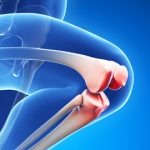Two pain treatments, extended-release injectable suspension triamcinolone acetonide (Zilretta) and meloxicam, have seen movement at the U.S. Food and Drug Administration (FDA). In October, the agency approved Zilretta to treat osteoarthritis (OA) knee pain and accepted a new drug application for meloxicam to treat pain. FDA Approves Zilretta On Oct. 6, the FDA approved extended-release,…



